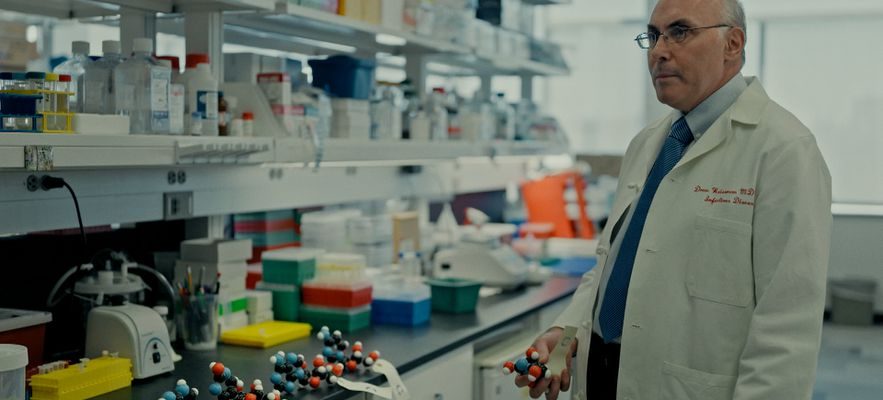It’s the story of a somewhat fortuitous meeting at the photocopier at the University of Pennsylvania, between two researchers who are complete opposites. We are in the 1990s. Katalin Karikó swaggers, in front of a stern-looking stranger in a white coat. The Hungarian-American biochemist tells him about the remedies she is trying to create in her laboratory, by hijacking the molecules that tell our cells what to do. His mimeograph companion retorts that one day he will beat AIDS.
Of this match recounted in the documentary The adventurers of messenger RNA, broadcast this Saturday, at 10:20 p.m. on Arte, thirty years later, one of the discoveries of the century will be born, the solution to one of the worst contemporary pandemics. The stranger in the photocopy is none other than the American immunologist Drew Weissman; the duo enabled the invention of the vaccine against Covid-19 and has just received the Nobel Prize in Medicine, this Monday, October 2.
Nourished by the reference work The messenger RNA revolution, vaccines and new therapies (Odile Jacob) by journalist Fabrice Delaye, The adventurers of messenger RNA restores the chances, the struggles, and the self-sacrifice of the men and women who participated in this scientific revolution. From the mastery of messenger RNA, a technology long shunned by Big Pharma, the wildest hopes are now born, from a vaccine against cancer to personalized therapy, available in a few minutes, effective against any disease.
Researchers who wander around Top Gun
This 1h30 feature film directed by Raphaël Hitier – former ARN technician – avoids the trap of the sanitized industrial story. We come across austere researchers in grayish corridors who wander Maverick-style in Top Gun, on rock’n’roll, before going into the technical details, made fascinating thanks to the tangy illustrations of the Les Astronautes collective. We also tame the disappointed people of history, like the American Robert Malone, the first to use messenger RNA on mice, who became a vaccine skeptic and is now close to the populists.
Drew Weissman received the Nobel Prize in Medicine with Katalin Karikó this Monday for his work on messenger RNA which notably led to the manufacture of the vaccine against Covid-19
© / Cutouts
The saga of messenger RNA is made up of pitfalls, failures, frustrations: many researchers have had their funding refused, despite promising discoveries. Because until the end of the 2000s, RNA was considered too fragile to allow industrial applications. This strand of acid, which serves as a watchword for cellular activity, breaks very easily. In 1993, the French Frédéric Martinon and Pierre Meulien already demonstrated that it was possible to vaccinate with these molecules, without obtaining funding.
Katalin Karikó and Drew Weissman, the two 2023 Nobel Prize winners, had to wait years before obtaining the capsules necessary to transport RNA into the body. Without them, it was impossible to demonstrate that they had understood how to stop the terrible inflammatory reaction triggered by the vaccine prototypes of the time, the last obstacle to their use. At the Paris premiere of the film, Steve Pascolo, another French RNA pioneer, recalled that his start-up, Curevac, was also very advanced, before failing against Moderna and Pfizer. It is all these experiences that the documentary recounts, bringing back its humanity to scientific conquest.
